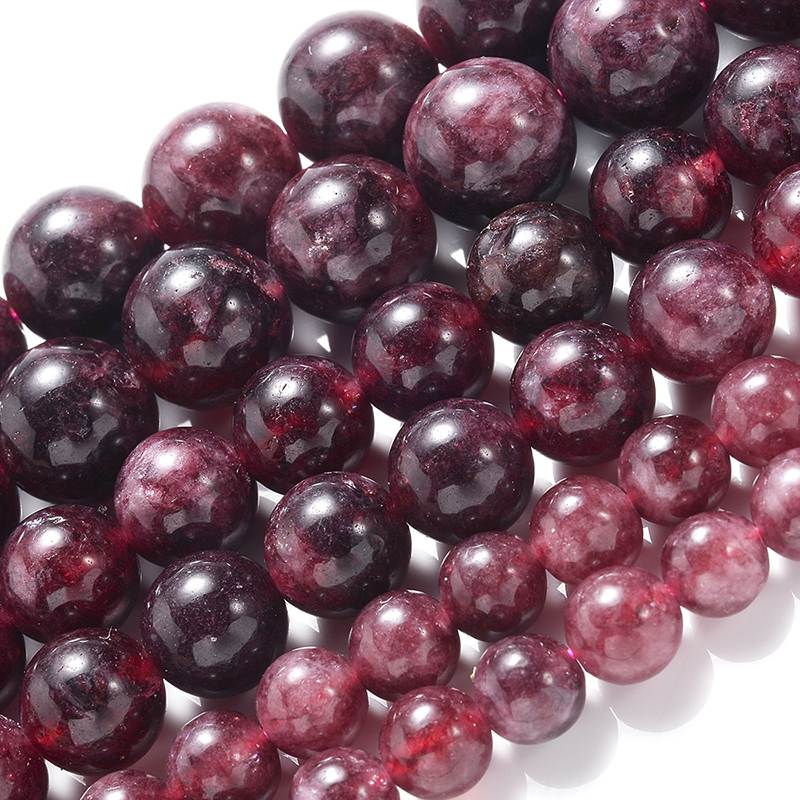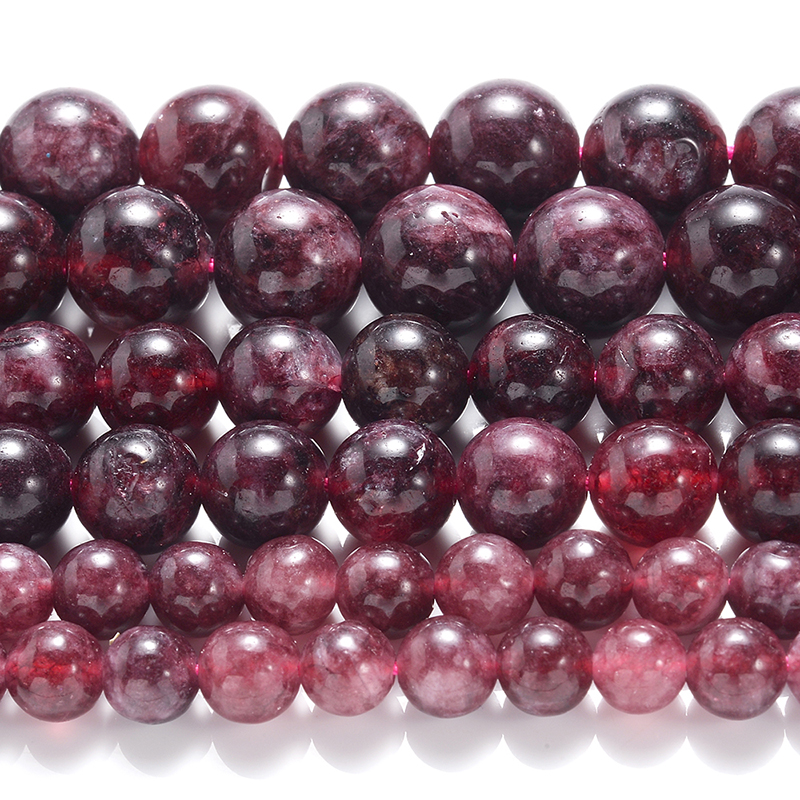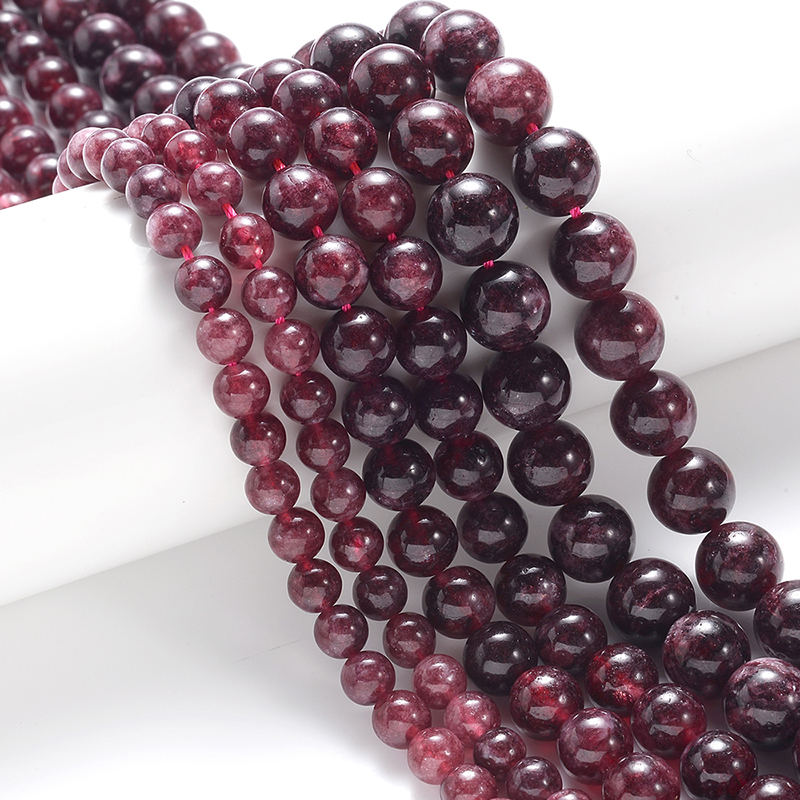Grossular or Grossularite garnet is one of the most important varieties of garnet gems. Its name comes from the Latin word “Reassembly a Gooseberry,” meaning “green fruit.”
But another said that it came from the Russian botanical name “TpoccyJIPHH,” which was named after the color of gooseberry. It was discovered in Siberia of the former Soviet Union by K. JIaKCMaHOM in 1790.

Basic property of Grossular
Chemical composition: the chemical composition is Ca3Al2 [SiO4] 3. However, one of the essential characteristics is that aluminum is higher than iron, which determines its inherent properties.
Crystal structure: equiaxed crystal system, space group ao=11.83A. Z=8.
Spectral lines of main powder crystals: 2.662 (100), 1.639 (90), 1.581 (100), 1.291 (90), 1.101 (100), 1.082 (90).
Form: The single crystal is a rhombic dodecahedron, tetragonal trioctahedron, or a combination of the two; In the sand karsts, they are usually dense massive aggregates.
Inclusion: It usually contains a large number of short and thick cylindrical inclusions, which may be diopside, apatite or zircon.
Properties: Pure ones are colorless or white, and those containing impurities are mainly greenish yellow, but others are yellow, orange-yellow, orange-brown, rose red, orange-red, green, emerald green, and black.
It is pink to red under the Charles filter. It has a strong glass luster. In some areas, it has diamond luster, transparent to translucent.
It can emit obvious orange fluorescence under X-ray excitation, weak green fluorescence under short-wave ultraviolet light, and weak orange fluorescence under long-wave ultraviolet light.
The transparent green Grossular can emit weak to medium red fluorescence under both long-wave and short-wave ultraviolet rays.
Absorption spectrum: The green Tsavorite colored by chromium can show the chromium spectrum, which includes several lines in the red area, a strong absorption band (at 630nm) in the orange area, several weak absorption bands in the orange area, and weak absorption band in the blue area. There is a strong absorption band at 461 nm in the blue region.
It is Colorless under transmitted light, or light brown or yellow, with high positive protrusions.
The refractive index is 1.735 ~ 1.770, generally 1.735. No cleavage. Homogeneous body, but there are often optical anomalies, and abnormal interference colors can be seen. The Dispersion of 0.028. The Hardness of 7, and The density of 3.61g/cm.
Occurrence: Grossular is mainly produced in the contact metamorphic zone between igneous rocks and carbonate rocks (such as limestone).
It is the main mineral in early skarn, and often coexists with diopside, Vesuvianite, wollastonite, etc. In addition, regional metamorphic rocks, nepheline-syenite, metavolcanic rocks and other rocks also occur.
The countries producing gem-grade Grossular include South Africa, Tanzania, Kenya, Madagascar, Pakistan, India, the former Soviet Union, Czechoslovakia, Romania, the United States, Canada, Mexico, etc.
For example, South Africa produces hydrogrossular, Kenya produces Tsavorite, Pakistan discovered gem-grade green Grossular in the 1960s, and the former Soviet Union produces brown-green Grossular crystals near the tributary of the Shina River in Siberia.
Gem-grade Grossular or its mineralization has been found in Xinjiang, Qinghai, Tibet, Sichuan, Guangxi, Fujian, Hebei, Liaoning and other places in China.

Grossular varieties
According to the difference in material composition, color, other arts and crafts characteristics, texture, origin, etc. Gem grade Grossular can be roughly divided into eight types:
1)Hessonite: Hessonite or Essonite is an iron-bearing variety of Grossular, also called “orange garnet .”Its crystals are orange-yellow to orange-brown or light brown-yellow to light brown-red, transparent.
The appearance is similar to the same color zircon, but the Hardness is lower than zircon, and the density is 3.50~3.75 g/cm. The refractive index is 1.742 ~ 1.748. The inclusion is exceptional, similar to the vortex heat wave.
In addition to zircon, Hessonite garnets are easy to mix with topaz, Spessartine garnet, emerald, sapphire, emerald, chrysoberyl, etc., with similar colors.
We can identify them according to their differences in material composition, crystal structure, morphology, inclusion, physical properties, arts and crafts performance, etc.
It is mainly produced in Sri Lanka, followed by former Czechoslovakia, Brazil, Canada, etc. However, a yellow Grossular garnet was found in Tanzania.
The GIA of the United States tested three yellow Grossular garnet gemstones and showed that the absorption in the direction of ultraviolet light was enhanced, and three bright lines about 407nm, 418nm, and 428nm appeared, and a pair of lines 370nm appeared.
These three light bands are typical features of Mn2+located at the askew cube of garnet. Obviously, the yellow color of Grossular is mainly caused by Mn2+ but has little to do with the existence of iron.
2)Cinnamon: Cinnamon (stone) is cinnamon tree color, or yellow-red, brown-red, transparent, known large crystal weight 25 carats, produced in Quebec, Canada. It is also found in Xinjiang, China.
3)Rosolite: Rosolite is light pink and produced in Mexico. In addition, a peach-colored “Landerite” is also produced in Rosto, Mexico.
4)Tsavolite: Tsavolite, also known as “Tsavo stone .”Its name first appeared in September 1974, originating from the garnet production area near the Kenya Sawo (also translated as “Tsavo”) National Sports Park.
In addition to Kenya, it also occurs in the mountains in the southeast of Komolo Village, Mount Liletima, and Mount Merilani in Tanzania.
The ore-bearing rock is graphite gneiss. Its crystals are green, light green, light yellow-green to dark green, transparent to translucent, and contain needle-like, fibrous, rod-like crystal inclusions.
The green color is light pink or light red under the Charles filter. The largest known crystal weighs 10-15 carats, generally 1-2 carats, and the high-quality one weighs about 1 carat.
A green Grossular garnet crystal was found in Tanzania in 1967. It is transparent, with a refractive index of 1.742~1.744 and a density of 3.64~3.68g/cm.
South Africa also produces Grossular garnet. Pakistan produces green Grossular, which looks like Demantoid, and is called “Pakistan emerald,” with a refractive index of 1.742 and a density of 3.62g/cm. In addition, the brownish-green one is called “Romansovite.”
5)Colorless Grossular: Colorless Grossular is colorless and transparent but rarely seen. For example, it was found in Germany as early as the 1960s, with a refractive index of 1.732~1.736 and a density of 3.65 g/cm.
6)Hydrogrossular: Hydrogrossular, also known as “aquagreen garnet,” contains chromium or manganese; The lattice contains water or radical (OH), so it is named.
Single crystals are rare, often in granular or dense massive aggregates. It is green, pink, brown, light blue, light gray, white, and other colors, of which green and pink can be used as gemstone materials.
It is glassy, transparent to translucent, and blocky is translucent to sub-translucent. The crystals often contain fine-grained or amorphous black, opaque magnetite inclusions.
It is Pink to red under the Charles filter and can emit orange fluorescence under X-ray irradiation. There is a strong absorption band at 461 nm in the blue region. The refractive index is 1.70~1.73. The density is 3.35-3.55 g/cm3. It is produced in South Africa, Kenya, New Zealand, the United States, Inner Mongolia, and other places in China.
7)Transvaaljade: Transvaaljade, also known as “South African Jade,” is named after its origin in South Africa’s Transvaaljade province. According to research, it is composed of Hydrogrossular or Tsavorite garnet, but it contains Vesuvianite stone.
Its appearance is like jadeite but slightly yellowish green, translucent to slightly transparent. Many small black inclusions can be seen with the naked eye.
It can emit orange or orange-yellow fluorescence under X-ray irradiation. A characteristic absorption band often appears near 465 nm due to the inclusion of Vesuvianite.
8)Californite: Californite, a grayish-white to medium green Grossular containing Vesuvianite inclusions, is produced in California, USA, Pakistan, South Africa, and other places.

How to identify Grossular
The difference between Grossular garnet and other garnet gemstones is different chemical compositions, and they can also be identified according to their differences in physical properties and arts and crafts characteristics.
For example, Grossular is easy to mix with these garnets with the same texture and isomorphic series, such as Andradite garnet and Uvarovite garnet.
In terms of color, emerald green is the main feature of the Andradite garnet and Uvarovite garnet. This is similar to Grossular but also different from Grossular, such as Hessonite, cinnamon, rhodolite garnet, etc.
The Andradite garnet contains fine and curved “horsetail” shaped inclusions, which are composed of radiative fibrous “green asbestos” with typical significance.
Its refractive index (1.875) and density (3.84 g/cm) are higher than that of Grossular.
In particular, its dispersion is very strong (0.057), with a strong “fire” phenomenon.
There is a double chromium line in the red area (about 700nm), two fuzzy bands can accompany the orange-yellow area, and a strong iron absorption band cuts through the short wave end of the spectrum in the purple area.
The refractive index (1.850 ~ 1.870) and density (3.77 ~ 3.90 g/cm) of the Uvarovite garnet are also higher than that of the Grossular garnet, which is green in transmission light and have typical significance. According to these characteristics, we can distinguish Grossular from them.
Gemstones similar to Grossular
Other gemstones similar to Grossular are diamonds, spinels, zircons, topaz, emeralds, etc.
In addition to the essential or apparent differences in material composition, crystal structure, morphology, natural decorative patterns, etc.,
They can also be identified according to their main differences in physical properties, arts and crafts performance, etc.
For example, the Hardness (10) and refractive index (2.417) of diamond are much higher than that of Grossular garnet, with strong dispersion (0.044) and high thermal conductivity, which are all higher than that of Grossular garnet.
Topaz belongs to the orthorhombic system with heterogeneity. The cylindrical surface of the crystal has longitudinal lines. The refractive index (1.619~1.627) and dispersion (0.014) are lower than that of Grossular, which contains two or more immiscible liquid inclusions.
Emerald belongs to the hexagonal system with heterogeneity.
Its density (2.72 g/cm), refractive index (1.577~1.583), and dispersion (0.014) are lower than that of Grossular and contain three-phase inclusions.
On this basis, Grossular can be easily distinguished from them.
Differences between jadeite and Grossular
Main differences:
- The Hardness of Grossular is 7.5, the density is 3.77g/cm3, and the refractive index is 1.86-1.87, which is higher than that of jadeite, but the crystal is brittle, and the surface has glass luster.
- Grossular is commonly characterized by feathery or horsetail impurity structure, and its fracture is shell-shaped and uneven.
- The green Grossular garnet phenocrysts with coarse grains in the jade will form green dot-like color spots without emerald nature and orange peel effect.
- The green part of Grossular garnet jade will become red or orange-red under the Charles filter.
Conclusion:
The color of Grossular is dark-red, purple-red, rose-red, or red-orange, and it is usually round particles or pebble-shaped, but its crystal is dodecahedral and octahedral. Superior Grossular is distributed in metamorphic rocks or shoals in Sri Lanka.
Grossular is called “cinnamon” In Madagascar, other producing areas include Brazil, Canada, Siberia (Russia), Maine, New Hampshire, and California, the United States.
